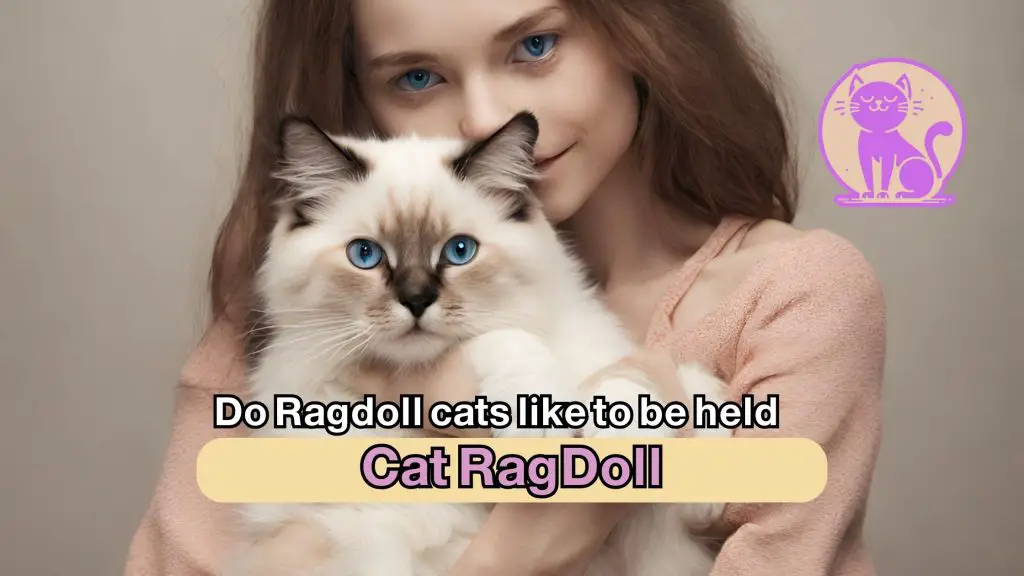Welcoming a fluffy companion into your life extends beyond the allure of soft fur and enchanting eyes; understanding the nuances of a feline’s disposition can enrich the bond between pet and owner. For those considering ragdoll cat adoption, the quintessential question often arises: are these majestic creatures inclined to indulge in human embrace? Delving into the compelling ragdoll cat personality, we uncover a breed celebrated for its congenial nature, a trait that endears them to families and singles alike.
Originating from the clutches of affectionate ragdoll kittens, these cats often mature into lap lovers that exhibit a desire for physical closeness. Prospective owners discover that, with Ragdolls, the promise of a warm hold is not only met but eagerly anticipated. The sheer joy of embracing a Ragdoll is matched by their serene countenance, a trait that beckons calm to a bustling home. Let’s explore the heartening world where the Ragdoll’s love for a nurturing grasp is as vast as their sapphire gaze.
Ragdoll Cat Personality and Affection Levels
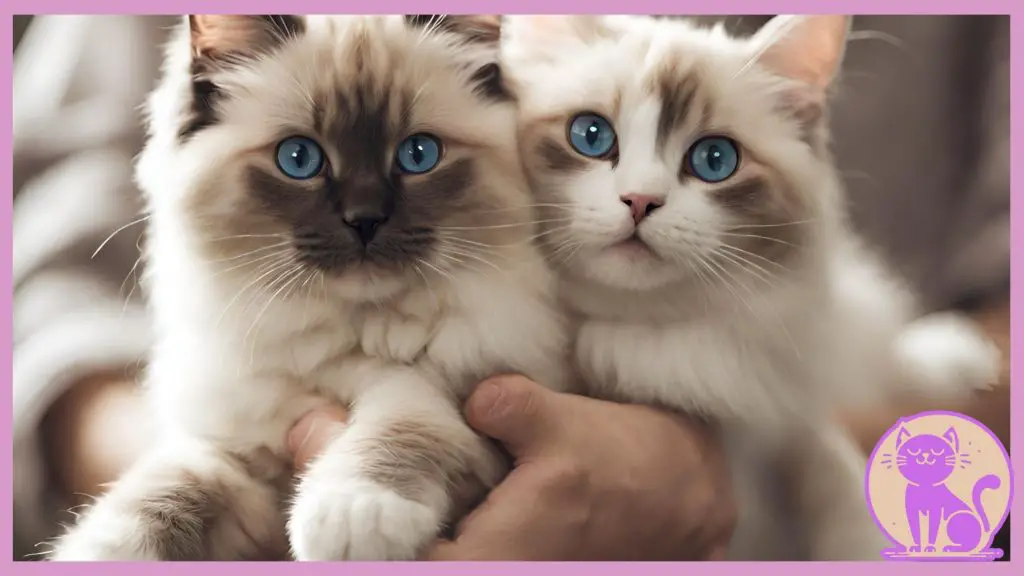
The Ragdoll cat temperament is often characterized by a unique blend of traits that draw cat enthusiasts towards this particular breed. Noted for their laid-back and gentle nature, Ragdolls display a serenity that resonates with those seeking a tranquil feline companion. Their well-mannered disposition can be attributed to selective breeding choices emphasizing mildness and docility. To delve deeper into the world of Ragdoll cat personality traits, we must understand the cornerstones of their affectionate demeanor.
Exuding high affection levels, Ragdolls are known for their approachability and willingness to engage with humans. They make engaging pets who readily return the love and attention they receive. This loving demeanor isn’t merely incidental; it’s deeply embedded in their sociable nature, making Ragdolls highly sought after by individuals and families alike. True to their name, Ragdolls often become a child’s favorite plush toy-come-to-life, gracefully accepting cuddles with a soft purr.
The propensity for affection in Ragdolls isn’t solely an inherent trait; it flourishes under attentive ragdoll cat care. An environment enriched with love, care, and consistent human interaction nurtures their natural tendencies to bond and show affection. Below, we’ll explore some key components of providing exemplary care to cultivate these innate qualities further.
- Nutrition: A well-balanced diet ensures a healthy, contented Ragdoll, more likely to be affectionate and interactive.
- Playtime: Regular play sessions contribute to their emotional well-being and establish a stronger bond with their human companions.
- Healthcare: Routine veterinary care not only maintains optimal health but also reassures your Ragdoll of a nurturing home.
- Comfort: A secure, cozy living space allows your Ragdoll to feel at ease, enhancing their sociable traits.
It’s evident that nurturing relationships is instrumental for the affectionate Ragdoll cat to thrive. The interplay between their inherent qualities and the care they receive creates a truly rewarding companionship, replete with abundant displays of love. Embracing these aspects of Ragdoll cat care, any cat lover can find themselves with a delightful and endearing feline friend for life.
Understanding the Ragdoll Cat’s Love for Cuddles
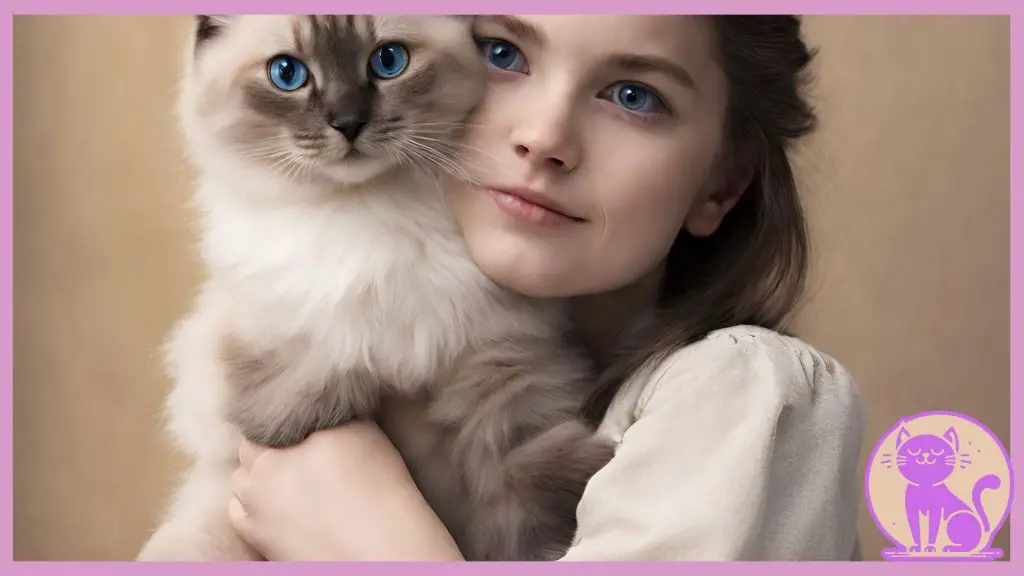
Often celebrated for their affectionate nature, rag doll cats have a certain allure that makes them irresistible to those who cherish a good cuddle with their feline friends. The ragdoll cat personality is notably gregarious, characterized by an innate desire for physical closeness with their humans. This breed molds a great part of its identity around these interactions which serve not just as moments of affection but as a critical component of their psychological well-being.
Owners and feline experts alike often share stories that paint a picture of a breed that flourishes through tactile interaction. Anecdotal evidence suggests that Ragdolls thrive when integrated into household dynamics that accommodate their need for connection. They are commonly seen following their owners from room to room, snuggling into laps, or draping themselves over shoulders, actively seeking the warmth and comfort of human touch.
“In my twenty years of working with cats, the Ragdoll stands out as the epitome of a ‘velcro cat.’ Their tendency to bond with humans resembles that of a loyal companion dog, always looking for a chance to be in your embrace.” – Dr. Cassandra Winters, Feline Behaviorist
The reasons behind their affinity for cuddles are multifaceted, influenced by genetics and the nurturing environment provided by their owners. The ragdoll cat personality traits such as their placid temperament and docile nature make them ideal for prolonged cuddle sessions. Studies in feline psychology expound on how this breed’s friendly demeanor is not just by chance but is a cultivated aspect of their breed standard.
- They are known for their patience and lack of aggression, which translates into being a perfect cuddle buddy.
- Their large, plush bodies offer a comforting presence that many find soothing during times of stress.
- Ragdolls typically maintain kitten-like behaviors throughout adulthood, including a fondness for being held and petted.
Understanding and creating space for these cuddly behaviors can enhance the lives of both rag doll cat owners and their cherished pets. When considering Ragdoll cat adoption, prospective pet parents should recognize that these social interactions are not just a preference but a necessity for their emotional health. A regular cuddle isn’t merely a moment of affection; it’s a shared life experience that deepens the bond between a rag doll cat and their human companion.
The Nature of Rag doll cats and Physical Contact Preferences
Among the cadre of feline breeds, Ragdoll cats stand out for their exceptional affinity for human interaction, a trait highly praised by both ragdoll cat breeders and feline aficionados. These captivating creatures have a reputation for displaying an array of behaviors that signify their love for physical contact. As such, it is insightful for current or potential owners to understand the nuances of the ragdoll cat personality and the ways they express contentment and pleasure when in the caring arms of their humans.
Exploring Ragdoll Cat Behavior
Noted for their placid and affectionate temperament, Ragdoll cats often exhibit distinctive indicators that highlight their desire for closeness with their owners. Their behaviors reveal much about their temperament, which is characterized by a serene demeanor and a tendency to relax fully when picked up—earning the breed its charming “ragdoll” moniker. It’s these behaviors that reflect the quintessential essence of the ragdoll cat temperament—one of calmness, trust, and affection.
Signs Your Ragdoll Enjoys Being Held
Recognizing a Ragdoll’s fondness for being held can be quite straightforward, provided one is attuned to their body language and vocalizations. A cat’s purring is often equated with pleasure, and in the case of the Ragdoll, this auditory signal, combined with a propensity for kneading and seeking out the comforting cradle of a lap, clearly communicates their contentment and joy. The interactive dynamic between Ragdoll cats and their owners is deeply shaped by these signs, anchoring a bond grounded in their sociable and accommodating nature.
| Behavior | Description | Indication of Affection |
|---|---|---|
| Purring | Vibrations emitting from the throat | Signifies contentment and pleasure |
| Kneading | Gentle pushing motions with the paws, alternately | A reminiscent behavior from kittenhood, denoting comfort and satisfaction |
| Seeking Laps | Actively finding a lap to rest upon | Desire for closeness and warmth from their trusted human |
| Relaxation when Held | Body goes limp, akin to a soft doll | A hallmark of trust and the characteristic trait of Ragdolls |
These traits and tendencies not only endear ragdoll cats to their human counterparts but also distinguish them as a breed exceptionally suited for individuals and families seeking a gentle and loving pet. Whether it is through the recommendation of ragdoll cat breeders or through firsthand experience, the Ragdoll cat’s personality shines through in every tender interaction and heartfelt cuddle.
Factors That Influence a Ragdoll’s Desire to Be Held
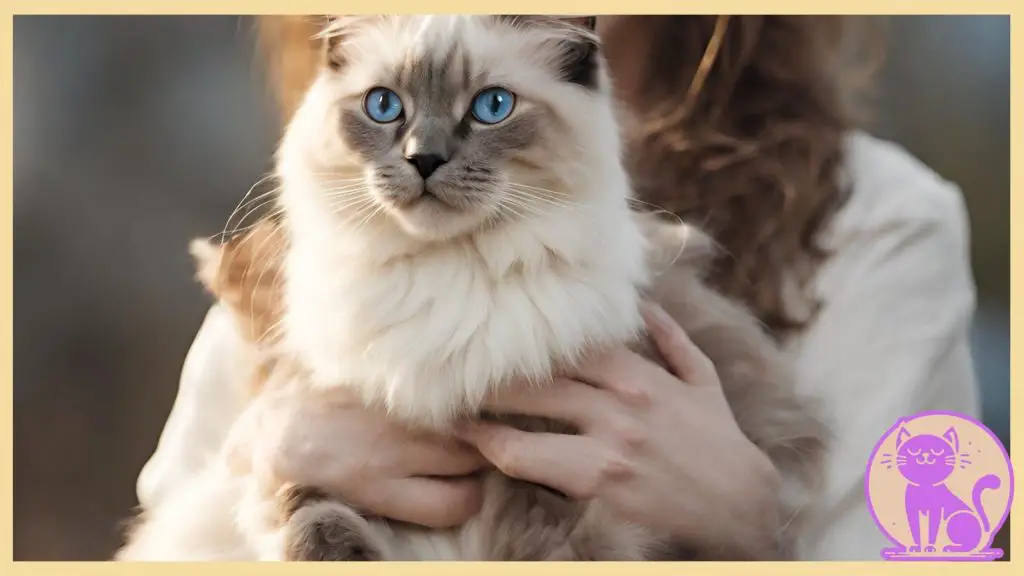
When considering ragdoll cat adoption, potential owners often ponder about the affectionate nature of these felines. Understanding the ragdoll cat personality is fundamental, as it guides their desire to be held and coddled. Not all ragdolls display the same level of enthusiasm towards cuddles; several elements are at play in shaping this preference. For instance, the individual personality traits inherent to each cat can greatly determine their propensity for physical closeness. Are they the bold pioneer of your household, or the quiet observer from a sun-soaked windowsill?
Moreover, past experiences can profoundly influence a ragdoll’s disposition towards being held. Cats that have enjoyed positive interactions with humans during their critical socialization phases tend to associate handling with comfort and security. Conversely, those with less favorable early human contact may exhibit hesitation or even aversion to being picked up. Age also factors into this equation; as ragdoll kittens grow and their experiences amass, their attitudes towards affection may evolve.
The genesis of a ragdoll kitten’s journey, including its upbringing and initial environment, is pivotal in shaping their adult behavior. The care, handling, and socialization they receive in their formative weeks can set a precedent for their future responses to human contact.
| Factor | Influence on Desire to Be Held | Consideration in Adoption |
|---|---|---|
| Personality | Unique to each cat, ranging from outgoing to reserved. | Individual cat’s personality should align with owner’s expectations. |
| Past Experiences | Positive early human contact tends to lead to a liking for being held. | Understanding a cat’s history can inform handling preferences. |
| Age | Kittens more malleable, adults may have set preferences. | Older cats may require more time and patience to adjust to new affectionate routines. |
| Socialization | Early socialization critical for comfort with handling. | Assess the breeder’s approach to kitten socialization before adoption. |
Becoming acquainted with these factors will not only enrich the bond between you and your ragdoll but also ensure that your shared experiences are mutually rewarding. It’s this insight that nurtures a harmonious connection pivotal for those considering ragdoll cat adoption and seeking a feline companion renowned for its affectionate demeanor and tendency to embrace a good cuddle.
Ragdoll Cat Grooming and Handling
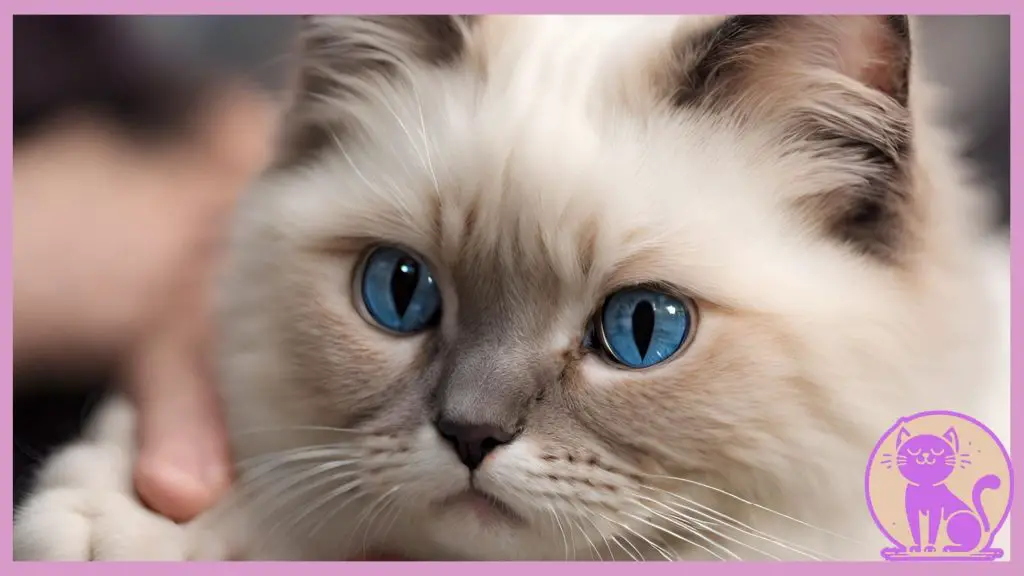
Nurturing the unique ragdoll cat personality through meticulous grooming lays the foundation for a stronger owner-cat relationship. As an embodiment of ragdoll cat care, grooming not only enhances your Ragdoll’s aesthetic charm but also acts as a conduit for deepening trust. Let’s delve into the ways that grooming transcends the mundane and becomes a cherished bonding ritual, alongside the best practices to ensure your Ragdoll looks and feels fantastic.
Grooming as a Bonding Experience
Initiating regular grooming sessions with your Ragdoll can create intimate moments that are cherished by your feline friend. This activity not only ensures a mat-free coat but also serves as a quiet time for you to build rapport with your pet. The gentle strokes during brushing can mimic the affectionate licks from their kitty-mother, reinforcing trust and comfort between you and your Ragdoll.
Best Practices for Grooming Your Ragdoll
Here are some recommended approaches for grooming your Ragdoll cat to maintain their semi-long coat in peak condition while prioritizing their comfort:
- Choose the right brush: A stainless steel comb or a slicker brush is ideal for detangling a Ragdoll’s luxurious fur without causing discomfort.
- Gentle brushing technique: Start at the head, moving towards the tail, gently working through tangles. Be extra careful around the sensitive belly area.
- Regular grooming schedule: Consistency is key. Aim to brush your Ragdoll several times a week to avoid matting and reduce hairballs.
- Positive reinforcement: Reward your cat with treats and affection during and after grooming sessions, uniting the concept of pleasure with the act of being groomed.
Adhering to these best practices will significantly contribute to your Ragdoll cat’s well-being and enjoyment of physical contact, reflecting their affectionate nature and reinforcing your bond.
Ensuring Your Ragdoll Cat’s Comfort When Being Held
For those enchanted by the docile ragdoll cat personality, understanding the nuances of ragdoll cat care is essential, especially when it involves physical affection. Handling your Ragdoll cat with tenderness and awareness is fundamental to maintaining their trust and comfort. When it comes to holding these sweet-tempered felines, there are specific techniques that can assure a safe and enjoyable experience for both you and your pet.
How to Properly Pick Up and Hold a Ragdoll Cat
Picking up a Ragdoll cat, or any cat, requires a mixture of confidence and gentleness. Start by placing one hand under their chest while supporting their hind legs with the other hand. This offers support to the cat’s entire body. Slowly lift them to your chest level and hold them close to your body to give them extra security. It’s crucial to avoid sudden movements or holding them too tightly, as these actions can cause anxiety or discomfort.
Recognizing and Respecting Your Cat’s Boundaries
Even the most friendly and loving creatures have their limits, and the Ragdoll cat is no exception. Recognizing your pet’s boundaries is a key aspect of ragdoll cat adoption and ongoing care. Keep an eye out for signals, such as a twitching tail or flattened ears, which may indicate it’s time to put them down. Being sensitive to these cues is vital in building a respectful relationship with your Ragdoll.
| Signs of Contentment | Signs of Discomfort |
|---|---|
| Purring | Flattened ears |
| Leaning into the hold | Twitching or lashing tail |
| Soft, slow blinking | Avoiding eye contact or staring |
Every interaction with your Ragdoll cat is an opportunity to strengthen your bond and demonstrate responsible pet ownership. By knowing how to pick up and hold your Ragdoll properly and respecting their individual personality and comfort zones, you contribute to a trusting environment that encourages a stronger connection between you and your beloved pet.
Ragdoll Cat Care and Its Impact on Their Affection
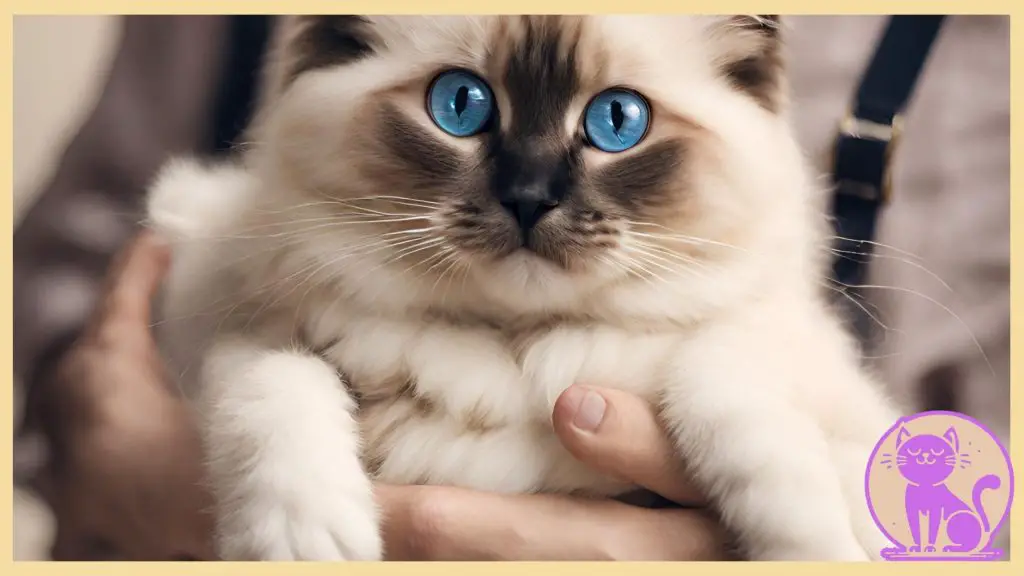
Owners of Ragdoll cats can attest that the level of ragdoll cat care provided plays a pivotal role in enhancing their pet’s affectionate nature. It’s not just about sustaining good ragdoll cat health; it’s also about nurturing a bond that encourages their distinct ragdoll cat temperament. By catering to their health, Ragdolls tend to reciprocate with increased trust and a greater propensity for physical affection such as cuddling and being held.
Adopting best practices in cat care can manifest in several key aspects of a Ragdoll’s life. From dietary management to regular veterinary check-ups, each facet of care comes together to support a well-rounded, affectionate pet. Below, we explore some of the essential elements that contribute to a Ragdoll’s loving disposition when these care practices are properly implemented.
- Diet and Nutrition: A balanced diet is the foundation of good health for any feline. Ragdolls thrive on high-quality cat food that meets their nutritional needs and keeps their coat silky and luxurious.
- Regular Veterinary Visits: Routine health checks and vaccinations are essential. Healthy Ragdolls are happy cats, more likely to engage in affectionate behaviors.
- Mental Stimulation: Mental health is as important as physical health. Interactive play, puzzle feeders, and new forms of engagement can keep a Ragdoll’s mind active and their temperament sunny.
- Physical Exercise: Regular play sessions not only keep Ragdolls fit but also deepen the bond between pet and owner, solidifying their comfort with close contact.
- Grooming Sessions: While not directly impacting health, grooming can be a therapeutic exercise for Ragdolls, fostering trust and showcasing their love for pet-owner interactions.
Certainly, diligent and affectionate care leads to a more amiable and trusting Ragdoll cat. This mutual understanding and close relationship is often mirrored in the cat’s eagerness to seek out its owner’s lap or arms for comfort and security. Thus, comprehensive care is not just a responsibility—it’s a cornerstone for a lifelong affectionate relationship with your Ragdoll cat. Through detailed ragdoll cat care, owners will experience firsthand how this breeds unreserved affection is as much a response to their care as it is a trait of their gentle ragdoll cat temperament.
How Socialization Affects Your Ragdoll Cat’s Comfort with Being Held
Socializing your Ragdoll cat from an early age is paramount in shaping their future interactions with humans and their overall demeanor, including their willingness and comfort with being held and cuddled. Experienced ragdoll cat breeders can attest to the lasting impact of early social interactions on ragdoll kittens, which often set the stage for their lifelong behavior and ease with handling.
The Importance of Early Socialization
Just like children, ragdoll kittens undergo a critical period of development when they are highly receptive to new experiences, which includes socialization. During this phase, positive interactions can help kittens develop into well-adjusted adult cats who are comfortable with handling, reducing stress and anxiety associated with being held. Lack of such engagement during kittenhood may result in a skittish or reticent adult ragdoll cat, emphasizing the need for early and consistent socialization.
Social Interaction Tips for Ragdoll Cats
Owners looking to nurture a loving relationship with their Ragdoll cats where being held is a positive and welcomed experience can follow these recommended tips:
- Introduce Gradually: Begin with short, gentle handling sessions and gradually increase the duration as your Ragdoll kitten becomes more comfortable.
- Consistent Handling: Regular, gentle handling by different people helps kittens adapt to various touches and holds.
- Positive Reinforcement: Use treats and affection to reward calm behavior and acceptance of being held or cuddled.
- Engage in Play: Interactive play can help kittens associate human contact with fun and pleasure, enhancing their comfort with being held.
- Respect Their Space: Always observe your Ragdoll cat’s cues and give them space when they prefer not to be held.
Patience and understanding are key components in ragdoll cat socialization, as some may require more time to adjust than others. By following these guidance points, owners can foster a loving bond defined by mutual trust and enjoyment of shared affectionate moments.
Conclusion
In wrapping up this discussion on the endearing Ragdoll cat breed, it’s clear that these felines have a strong preference for being cradled in the arms of their human companions. Our exploration into their world has underscored their inherently affectionate disposition, which is a hallmark of the breed and a significant factor in their desirability as pets. We’ve witnessed how their sociable and relaxed temperament is complemented by the delightful experience of their plush, semi-long coats, a trait that only adds to their allure. While elements such as ragdoll cat price and the vibrant spectrum of ragdoll cat colors may initially catch the eye of potential adopters, it’s the Ragdoll’s need for warmth and care that deserves the keenest attention.
As we’ve learned, the commitment to nurture a Ragdoll cat involves more than simply appreciating their stunning aesthetic qualities; it also includes understanding their need for consistent grooming, social interactions and respecting their comfort with being handled. The aspects of ragdoll cat adoption go beyond aesthetics and cost, reaching into the essential understanding of what it means to provide a loving and supportive home for these gentle creatures.
For those considering bringing a Ragdoll into their lives, it’s important to factor in every facet of the breed’s personality and care requirements. The journey with a Ragdoll cat is a rewarding one, filled with mutual affection and deep bonds. A prospective owner should be prepared to offer not just a home, but also a place in their heart for these exceptional cats. Consider all these details thoughtfully to ensure a harmonious match that brings joy and companionship to both you and your Ragdoll for many years to come.
FAQ
Q: Do Ragdoll cats like to be held?
A: Ragdoll cats are known for their affectionate nature and many do enjoy being held. They have a gentle and laid-back temperament, making them ideal companions for cuddles. Through positive experiences from kittenhood, Ragdoll kittens may develop a strong preference for being cradled in their owner’s arms, enhancing their reputation for being very loving pets.
Q: What is distinctive about a Ragdoll cat’s personality?
A: Ragdoll cats possess a unique combination of traits that make them stand out. They are often described as dog-like, due to their friendly, placid, and affectionate nature. They tend to follow their owners from room to room, and they enjoy being a part of daily activities. Additionally, Ragdolls are known for their high levels of affection, often seeking physical closeness with their human companions.
Q: Why do Ragdoll cats enjoy cuddling so much?
A: The Ragdoll breed is particularly known for its love of cuddling, possibly due to their sociable personality and their desire for companionship. They enjoy being close to their owners and find comfort in the physical presence and warmth of the people they trust. This desire for affectionate interaction is a hallmark of the breed’s characteristic temperament.
Q: How can I tell if my Ragdoll cat likes being held?
A: Common signs that your Ragdoll enjoys being held include purring, relaxing its body, nuzzling against you, kneading with its paws, and seeking out your lap or arms on its own. Paying attention to your cat’s body language and responses when held will help you understand your pet’s personal preferences.
Q: What factors may affect a Ragdoll’s desire to be held?
A: A Ragdoll’s individual personality, past experiences, and age can all influence their inclination towards being held. Socialization as ragdoll kittens plays a critical role in their comfort with physical affection as they grow older. Encouraging positive handling experiences early on can help nurture a love for being held.
Q: How does grooming affect a Ragdoll cat’s tolerance for being held?
A: Grooming can serve as an excellent way to bond with a Ragdoll cat, fostering trust and positive associations with being handled. Establishing a routine consisting of gentle brushing and careful attention to their semi-long coat can enhance a Ragdoll’s enjoyment of contact and being held. Proper grooming is an essential part of ragdoll cat care that contributes to their social and affectionate behavior.
Q: How do I properly pick up and hold a Ragdoll cat?
A: To ensure your Ragdoll cat’s comfort when picking them up, always support their back legs and hold them close to your chest to provide a sense of security. It’s important to be gentle and to recognize your cat’s mood — they may not always be in the mood for physical affection. Learning to read their signals for boundaries and discomfort is critical for their well-being and your bond.
Q: Can good Ragdoll cat care impact their affection levels?
A: Absolutely. Providing thorough ragdoll cat care, including regular health check-ups, proper nutrition, and plenty of affection and playtime, creates a healthy environment for your cat. This comprehensive approach to care ensures a trusting relationship between you and your Ragdoll, fostering their natural affectionate behavior and willingness to be cuddled.
Q: How does socialization influence a Ragdoll cat’s comfort with being held?
A: Early socialization is key for Ragdoll kittens to grow up comfortable with being held and handled. Introducing them to various people and positive interactions can significantly affect their response to physical affection as adults. Engaging kittens in gentle play and handling by different family members or visitors can help them become well-adjusted, sociable cats.

